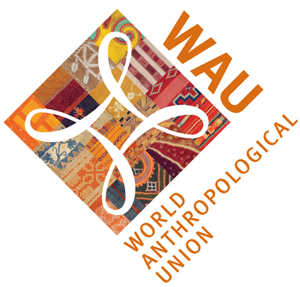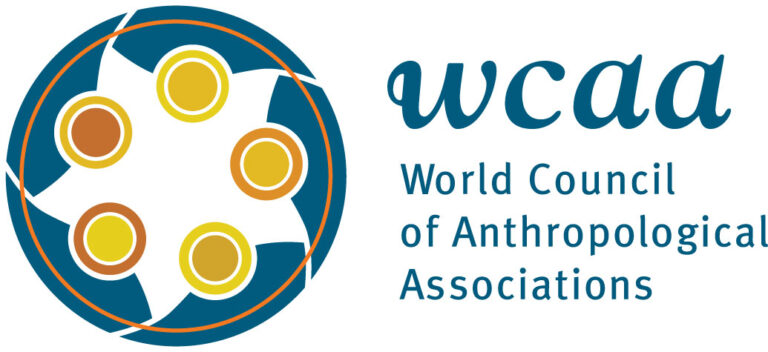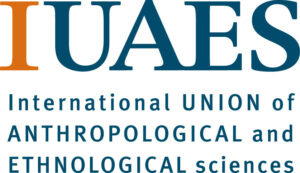Questions for Journal Editors for the Tenth Anniversary of Deja Lu
Questions for Journal Editors Interview by Joy Owen, of editor Matti A Eräsaari
11 November 2021
Joy Owen: Tell us about the journal you edit.
Matti A Eräsaari: Suomen Antropologi: Journal of the Finnish Anthropological Society is an independent open-access journal that has been published since 1976. It is a “general anthropology” journal, meaning that it does not have a particular theoretical, thematic, or geographical focus. Besides a core content of peer-reviewed articles required by our funders, Suomen Antropologi is free of any external requirements regarding content or form, which has at times allowed us to publish things that didn’t fit other journals’ content categories. It might be due to this that Suomen Antropologi is sometimes described as eccentric or at least outside the mainstream. Maybe this reflects the fact that academic publishing is a bit more standardized than it needs to be?
JO: Who publishes in your journal? Of what national origin? Who are your authors, typically? What are the language options for your authors publishing with you?
ME: The journal is published by the Finnish Anthropological Society, the national anthropological association in Finland that has a membership of just over 200. Roughly half of our authors come from Finnish universities, most of them anthropologists. But we are happy to publish authors from adjacent fields as well, as long as their contributions are relevant – that is, they have something interesting to say – for an anthropological audience.
The journal used to be tri-lingual: it published texts in Finnish and Swedish – Finland’s two national languages – as well as English. The decision to make the journal all English was made some 15 years ago. Back then, Finnish universities and funders were stressing the importance of publishing in English for an international audience, so the journal had some difficulties getting article manuscripts from Finnish authors, who felt they needed to publish in English, and in journals recognized outside Finland. So we made the decision to cease publishing in the national languages and change the journal from Suomen Antropologi/Antropologi I Finland to Suomen Antropologi: Journal of the Finnish Anthropological Society. At the same time, the Finnish Anthropological Society started overseeing the publication of thematic “yearbook”-style edited volumes instead, in order to uphold ongoing anthropological discussion in the Finnish language.
JO: Can international authors publish in your journal?
ME: Yes. About 50 per cent of our authors submit from outside Finland.
JO: What topics define your journal? Do you encourage your authors to deal with national topics? Regional topics? Global topics? What is your particular focus?
ME: This is a tough one! Like I said, we see the journal as a general anthropology journal without a particular focus. But obviously there are topics that get emphasized because of what we’ve published before, like the anthropology of Christianity, or questions of location and place-making. But we have no intentional focus.
JO: What is the editorial process like? Who carries it out? Do you have an institution that shelters you? Who finances your journal? How many people make up the editorial team? Does anyone receive a salary for that job?
ME: Peer review is obviously the most time-consuming part of the process. We use a double-blind peer review, where we seek reviewers for each article manuscript according to its particular combination of theoretical interests and ethnographic specificity. An article manuscript has to pass review by at least two reviewers. Ideally, this means that one reviewer would be more of an “ethnography specialist” while the other specializes in the theoretical discussions that the reviewed manuscript engages in, but since we need to contact more than one people at a time (otherwise the peer review would take months), the final combination may emphasise one or the other. Once we have at least two reviews in, the editor in charge of the review process will explain the outcome of the review and digest the reviews for the author.
Other, non peer-reviewed manuscripts like essays or research reports go through a “lighter” review process: they are obviously overseen by one of our editors, but we also try to find one external reader for essays and reports. This process is not blinded: the readers act in an advisory role, but the decision to publish or not is up to the editors.
All texts are checked by a language editor before publication. We use the OJS (Online Journal System) platform during the editorial process, but not the section editor functions it offers. Instead, all editors have access to all manuscripts and reviews in the journal system (except articles written by our editors). This allows us to know what is going on in the journal, and learn from each other in the process.
ME: The journal is financed by the Finnish Anthropological Society and an annual publishing grant from the Finnish state. The anthropological society’s contribution comes from society membership fees; up until 2016 the journal was delivered in print to all society members, and available online only behind paywall through a commercial journal database. However, a membership survey of the Finnish Anthropological Society revealed that the vast majority of our members preferred being the funders of an open-access online journal rather than a restricted- membership journal, so the journal was relaunched as an independent online journal in 2016.
The Finnish state funds a substantial part of the journal’s expenses. The state publishing grant is an old, rather bureaucratic system administered by an organization called “The Federation of Finnish Learned Societies.” All of the associations that publish their own journals – and in Finland, the majority of science journals are still published by learned societies rather than an international publishing company – needs to make an application every year, report the previous year’s funds every year, apply for extensions if they lag behind publishing schedule, and so forth. Since funding from the state doesn’t stay the same, the size of the publishing grants may also vary a bit from year to year (in practice, they are cut every couple of years). For almost ten years, there have been plans for an updated system of state funding for OA journals, but since this needs to be designed in agreement with the universities, university libraries, and the changing international roadmaps for “openness”; the national Open Access project hasn’t really progressed after some promising initial signals. This arrangement allows us to pay the editorial secretaries, the language editor, and the typesetter.
JO: What criteria do you have to accept an article? Do you have a referee system for your journal? How does it work? How do you locate referees? What societies do your referees tend to come from?
ME: We cannot accept an article manuscript that has not passed peer review, so the review is the key requirement. We occasionally return article manuscripts to their authors prior to review if we think the manuscript would not pass review, for example due to language issues or because it hasn’t been properly completed.
Locating good referees for a manuscript might be the single most time-consuming task for me in journal publishing. In cases where I don’t immediately have a particular person in mind, I’ve been known to spend hours just googling suitable experts, whom I then contact. I usually ask them for recommendations about potential reviewers in case they are unable to take on reviewing duties at a given time, and usually people have come up with really good suggestions. Occasionally – especially during busy end-of-term periods – there comes a point where you start receiving the same recommendations over and over again. This is where I usually admit I’ve exhausted a particular niche of experts and start expanding my search parameters.
I will hand over the editorship of the journal within weeks, and the new Editors-in-Chief, Tuomas Tammisto and Heikki Wilenius, have already made plans for expanding the journal’s Editorial Board so that the Board might sometimes also serve as a pool of experts: people we can ask for advice with regards to potential reviewers. But at this stage this is only a plan.
JO: It’s often said that there is an Anglo-American core of journals that dominates global anthropological publication, in terms of theories that need to be cited. Does that have any impact on your journal? Do you try to encourage local theorization, or do you not feel the need to do that?
ME: We’re not in that Anglo-American core, but neither are we apart from it. We publish in English, our reviewers work in English, and they, too, tend to follow Anglo-American journals. We’ve never really spoken of a need for specifically local theorization, though the editorial team has had various plans for trying to engage and highlight different national and other internationally under-recognised anthropological traditions. We’ve not done that, though – largely because we haven’t had the time. Interested? Get in touch with our editorial team!
JO: What are the biggest problems that you face as a journal editor?
ME: Personally, it is time and career pressures. Journal editorship takes a lot of time, and it is usually time away from my own writing and research. This is not the kind of service to the community that gets formally recognized, so I end up feeling like I’m misspending my time – whether I am doing journal work or my own.
From the journal’s perspective, there is always a degree of uncertainty regarding the future. We have no income as an OA journal, and the journal cannot be sustained by the Finnish Anthropological Society’s membership fees alone. We are dependent on a national funding system that hasn’t been created yet.



